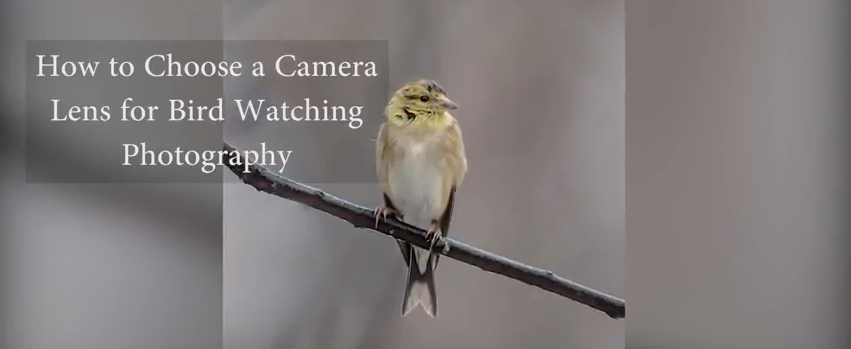Offer
Provide additional details about the offer you're running.
Provide additional details about the offer you're running.
Provide additional details about the offer you're running.

Catching the bird watching bug is one thing, adding a camera to the mix is a whole other rabbit hole in itself. If you have been bitten by the photography bug, you are likely familiar with the plethora of decisions you can make regarding the equipment.
When it comes to buying a quality DLSR camera, a ton of research is obviously required and eventually performed by the prospective buyer. While the fun truly does begin when the camera is removed from the box and attached to any lens, most budding photographers often begin looking for other items to enhance their newfound obsession.
While accessories such as tripods, bags, and cases are popular items many like to cross off the list early on, the next in line for upgrades is often the lens. As a rookie photographer, browsing through product listings online and all of the technical specifications that come with them can be quite overwhelming.
The truth is, without the help of someone with some experience in photography, the process can be a confusing one. So, let’s start simple and highlight a few of the basic sizes and their ideal use.
This is your ‘basic’ photography lens and on that often is included with the camera body, in many cases. These lenses are great and work perfectly for the majority of the photography most folks do. These are great for shooting indoors and for portraits and family photos as the subjects are often much closer than say, shooting something outdoors.
Beyond the 35mm, this is often the next stepping stone for many new photographers and is also where some photographers end their search for the perfect lens. This lens allows for shooting at much further distances and is without the heavy weight often associated with larger lenses.
When you strap a lens of this stature on to your camera, you know it. The weight is drastically heavier than any of the others but the performance is unmatched. While they do come with relatively hefty price tags, they are fantastic for shooting wildlife and easily attach to a tripod to allow for easy and stable shooting while in the field.
High Quality Blend